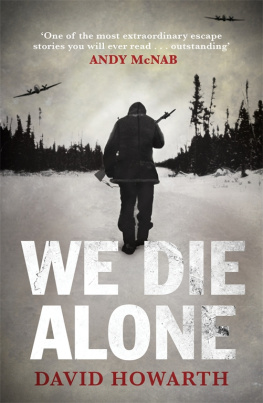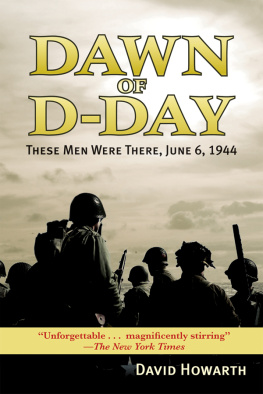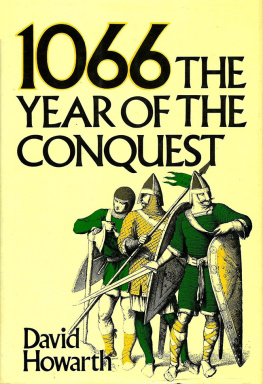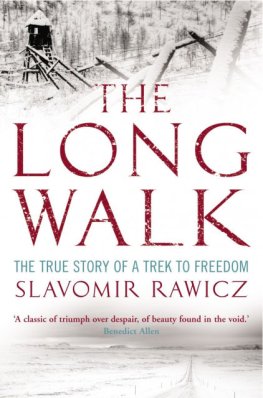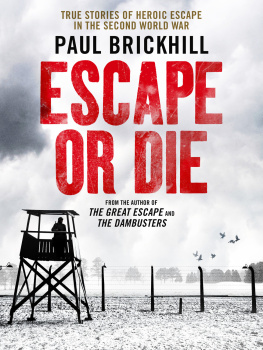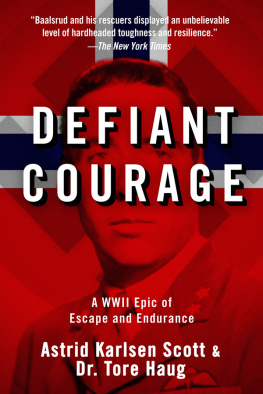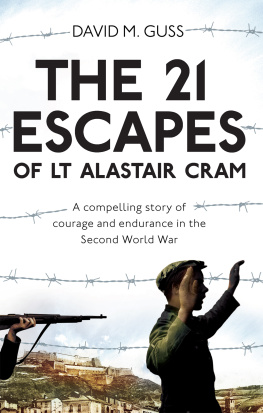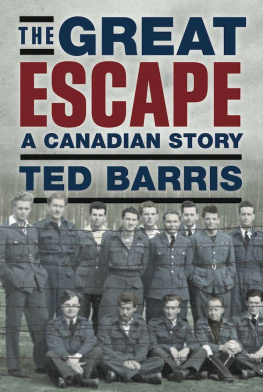David Howarth - We Die Alone: A WWII Epic of Escape and Endurance
Here you can read online David Howarth - We Die Alone: A WWII Epic of Escape and Endurance full text of the book (entire story) in english for free. Download pdf and epub, get meaning, cover and reviews about this ebook. year: 2007, publisher: Lyons Press, genre: Detective and thriller. Description of the work, (preface) as well as reviews are available. Best literature library LitArk.com created for fans of good reading and offers a wide selection of genres:
Romance novel
Science fiction
Adventure
Detective
Science
History
Home and family
Prose
Art
Politics
Computer
Non-fiction
Religion
Business
Children
Humor
Choose a favorite category and find really read worthwhile books. Enjoy immersion in the world of imagination, feel the emotions of the characters or learn something new for yourself, make an fascinating discovery.
- Book:We Die Alone: A WWII Epic of Escape and Endurance
- Author:
- Publisher:Lyons Press
- Genre:
- Year:2007
- Rating:5 / 5
- Favourites:Add to favourites
- Your mark:
- 100
- 1
- 2
- 3
- 4
- 5
We Die Alone: A WWII Epic of Escape and Endurance: summary, description and annotation
We offer to read an annotation, description, summary or preface (depends on what the author of the book "We Die Alone: A WWII Epic of Escape and Endurance" wrote himself). If you haven't found the necessary information about the book — write in the comments, we will try to find it.
We Die Alone: A WWII Epic of Escape and Endurance — read online for free the complete book (whole text) full work
Below is the text of the book, divided by pages. System saving the place of the last page read, allows you to conveniently read the book "We Die Alone: A WWII Epic of Escape and Endurance" online for free, without having to search again every time where you left off. Put a bookmark, and you can go to the page where you finished reading at any time.
Font size:
Interval:
Bookmark:
On mourra seul
PASCAL
16231662
I LEARNT about the Norwegian Resistance as part of my military training, but Id been inspired by their daring attempts to sabotage the Nazi occupation since childhood. I used to watch The Heroesof Telemark with Kirk Douglas every time it was shown on TV, and despite the overlay of Hollywood glamour, I was struck by the bleakness of the terrain and moved by the amazing courage with which those men and women fought against the Germans. It was this long-held admiration that took me to the Norwegian Resistance museum in Oslo last year, and, when asked to write a foreword to this book, made me only too happy to do so.
We Die Alone is the story of one mans ability to endure the worst imaginable and survive. Jan Baalsrud, an expatriate Norwegian resistance fighter, is in trouble as soon as his mission begins. He sails from the Shetland Islands to the far north of Norway with three fellow countrymen. Their aim: to train the villagers in the art of sabotage, and to gather intelligence on Germanys naval movements. But as with so many operations (my own in the Gulf War included), despite the most detailed preparation, the Great Plan explodes in their faces as soon as they hit the ground. The team are betrayed to the Nazis. Three are killed only Jan survives.
His mission then turns into one of the most extraordinary escape stories you will ever read. Frost-bitten and snow blind, he makes his break for neutral Sweden with more than fifty German soldiers on his tail. He endures physical hardship and mental torture in sub-zero conditions that no man would be expected to survive.
As part of our training in the 22nd Special Air Service, we were lectured by former Prisoners of War to learn from their experiences. I remember listening to one American Phantom pilot who had been shot down behind enemy lines in Vietnam and imprisoned for six years. He had been kept in solitary confinement in a 6' 4' cell and systematically tortured. Every major bone in his body had been broken. When I was captured during the Gulf War, I drew upon that pilots experience. If he could survive that kind of treatment, so could I.
Had I known Jans story during my imprisonment and torture in Baghdad, I have no doubt it would have provided me with similar inspiration. I would recommend We Die Alone not just to students of modern warfare, but to anyone interested in the resilience of the human spirit. It demonstrates very clearly what it takes to survive, but more importantly, it shows that the fundamental spirit to survive lies within us all.
There are three skills that all soldiers have drummed into them throughout their army career: Training, Experience and Knowledge. It was these three that helped save Jan. When he was so badly frost-bitten he could barely walk, when he had been blinded by the snow and his mind was so exhausted he couldnt think straight, something else took over. He had trained for this kind of operation for so long, he had years of experience behind him, and he had the knowledge that he was capable of surviving in these conditions.
Jan had something else too: he had a stubborn determination not to die. It is this determination not to give up, not to allow himself to sink into the depths of despair, to keep himself mentally together even when his body failed him, for which I hold him in the highest regard.
But this is not just one mans story. It is also the story of the extraordinary bravery of the villagers living in that remote part of Norway, ordinary men and women who were prepared to risk their lives and those of their families for a complete stranger. It is astonishing that such a large number of people were prepared to help in any way they could, regardless of the consequences, even when they knew Jan had almost no chance of survival. Perhaps it gave them a unique opportunity to hit back, to achieve an act of outrageous defiance against the Nazis that would help them, too, to survive. It is certainly thanks to their courage and perseverance that his escape was ultimately made possible.
We Die Alone is an outstanding read. If ever I had to go on an operation again, I would pick a Jan Baalsrud to go with me every time. And if I could depend on the kind of help and support he had when the going got rough, Id count myself a fortunate man.
Andy McNab
I HEARD the bare bones of this story during the war, soon after it happened, and I mentioned it briefly in my book The Shetland Bus. All that I knew about it then was based on a report which was written in a Swedish hospital by a man called Jan Baalsrud. It was a graphic report, but Baalsrud was very ill when he wrote it, and it left a lot unsaid. One could see that there was much more in the story, some things which Baalsrud had forgotten and others he had never known, although he played the main part in it. But it was not until ten years later that I had a chance to talk it all over with him, and persuade him to come with me to the far north of Norway where it happened, to try to find out the whole truth of it.
Now that I have found it out and written it down, I am rather afraid of being accused of exaggeration. Parts of it are difficult to believe. But I have seen nearly all the places which are mentioned in this book, and met nearly all the people. Not one of the people knew the whole story, but each of them had a most vivid recollection of his own part in it. Each of their individual stories fitted together, and also confirmed what Baalsrud himself remembered. Some minor events are matters of deduction, but none of it is imaginary. Here and there I have altered a name or an unimportant detail to avoid offending people; but otherwise, I am convinced that this account is true.
E VEN AT the end of March, on the Arctic coast of northern Norway, there is no sign of spring. By then, the polar winter night is over. At midwinter, it has been dark all day; at midsummer, the sun will shine all night; and in between, at the vernal equinox, the days draw out so quickly that each one is noticeably longer than the last. But the whole land is still covered thickly with ice and snow to the very edge of the sea. There is nothing green at all: no flowers or grass, and no buds on the stunted trees. Sometimes there are clear days at that time of year, and then the coast glitters with a blinding brilliance in the sunlight; but more often it is swept by high winds and hidden by frozen mist and driven snow.
It was on that coast, on the 29th of March, 1943, that this story really began. On that day a fishing-boat made landfall there, six days out from the Shetland Islands, with twelve men on board. Its arrival in those distant enemy waters in the third year of the war, within sight of a land which was occupied by the Germans, was the result of a lot of thought and careful preparation; but within a day of its arrival all the plans which had been made were blown to pieces, and everything which happened after that, the tragedies and adventures and self-sacrifice, and the single triumph, was simply a matter of chance; not the outcome of any plan at all, but only of luck, both good and bad, and of courage and faithfulness.
That particular day was sunny, as it happened, and the twelve men watched it dawn with intense excitement. It is always exciting to make the land after a dangerous voyage; the more so when ones ship approaches the land at night, so that when daylight comes a coast is revealed already close at hand. In that landfall there was an extra excitement for those men, because they were all Norwegians, and most of them were about to see their homeland for the first time since they had been driven out of it by the German invasion nearly three years before. Above all, here was the supreme excitement of playing a dangerous game. Eight of the twelve were the crew of the fishing-boat. They had sailed it safely across a thousand miles of the no-mans-land of ocean, and had to sail it back when they had landed their passengers and cargo. The other four were soldiers trained in guerrilla warfare. Their journey had two objectives, one general and one particular. In general, they were to establish themselves ashore and spend the summer training the local people in the arts of sabotage; and in particular, in the following autumn they were to attack a great German military airfield called Bardufoss. In the hold of the boat, they had eight tons of explosives, weapons, food and arctic equipment, and three radio transmitters.
Font size:
Interval:
Bookmark:
Similar books «We Die Alone: A WWII Epic of Escape and Endurance»
Look at similar books to We Die Alone: A WWII Epic of Escape and Endurance. We have selected literature similar in name and meaning in the hope of providing readers with more options to find new, interesting, not yet read works.
Discussion, reviews of the book We Die Alone: A WWII Epic of Escape and Endurance and just readers' own opinions. Leave your comments, write what you think about the work, its meaning or the main characters. Specify what exactly you liked and what you didn't like, and why you think so.

